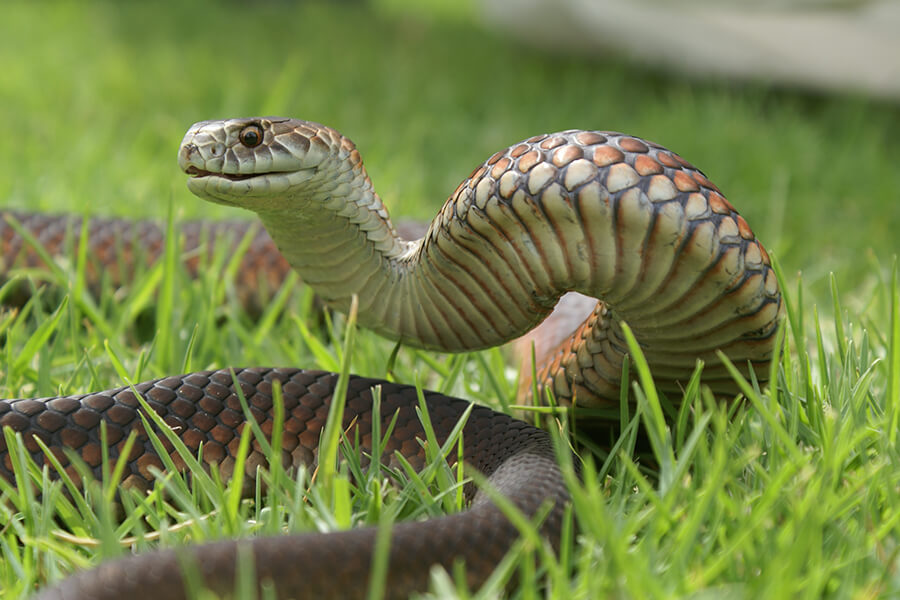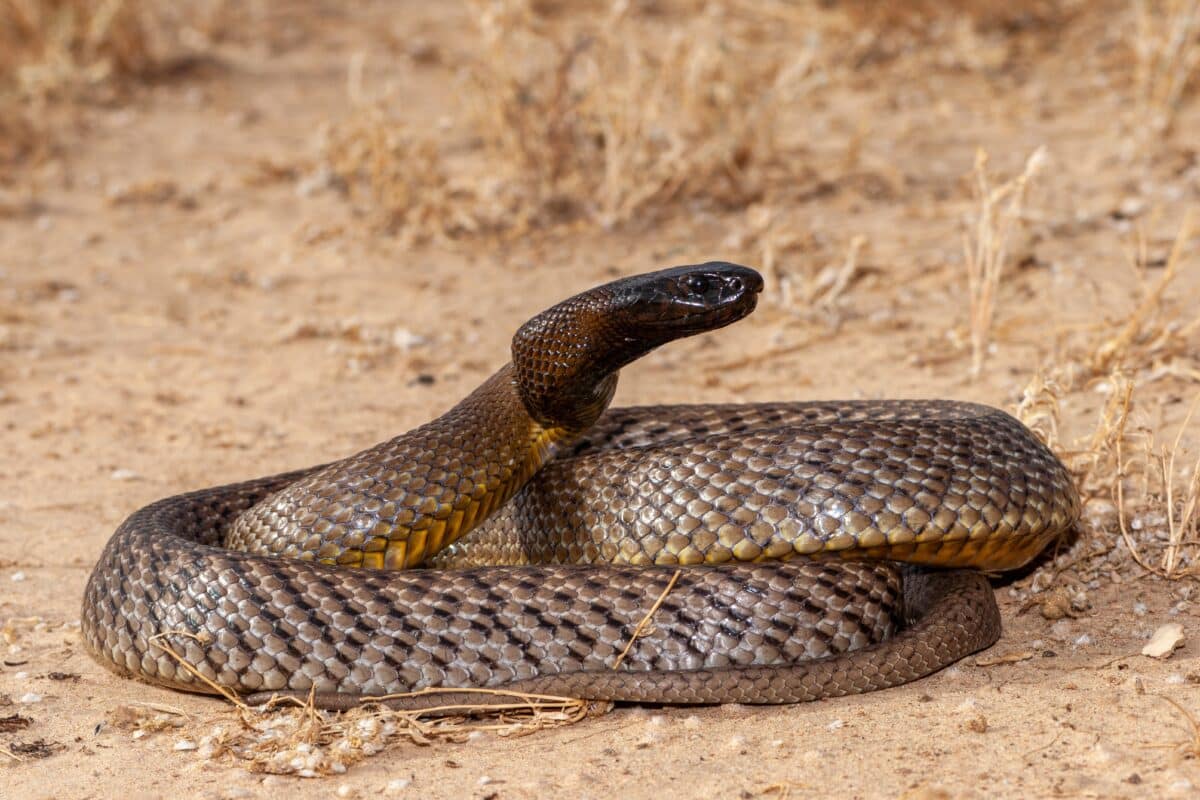Introduction

When it concerns the remarkable globe of serpents, couple of types catch the green tree snake - Skill's Training College imagination fairly like the child tiger serpent. various types of snakes - Skill's Training College Known for their distinct pigmentation and potent venom, these serpents are an important component of Australia's distinct environment. In this detailed post, we will explore numerous facets of child tiger snakes, including their actions, habitat, and how to safely connect with them. Whether you're a wildlife lover or just interested concerning these creatures, comprehending baby tiger snakes can aid promote a deeper appreciation for nature.
Baby Tiger Snakes: What You Need to Know About Their Habits and Habitat
What Are Baby Tiger Snakes?
Baby tiger serpents are juvenile kinds of the very poisonous varieties known medically as Notechis scutatus These serpents are mostly found in coastal areas of Australia, especially in Tasmania and southern Victoria. As they expand, their pigmentation changes from an extra muted palette to the characteristic yellow and black bands that provide their name.
One significant aspect of baby tiger serpents is their dimension; hatchlings typically gauge around 25-30 centimeters in size. In spite of their small stature, they possess an unexpected amount of poison that can be destructive to human beings if bitten.
Physical Characteristics
Tiger snakes have several vital physical qualities:
- Coloration: The distinctive banding pattern usually ends up being extra obvious as they mature. Size: Grownups can reach lengths of as much as 2 meters. Body Shape: They have a robust body that aids in swimming and earthbound movement.
Where Do Baby Tiger Snakes Live? Comprehending Their Habitat
Understanding the environment preferences of infant tiger snakes is essential for both preservation efforts and public security. These snakes flourish in different environments:
- Wetlands: Marshes and swamps give enough hunting grounds. Coastal Regions: Often found near beaches where they can quest for prey. Woodlands: Thick greenery uses cover from predators.
Geographical Distribution
Tiger serpents are primarily located along Australia's southern shoreline, including:
- Tasmania: Home to one of the most infamous populations. Victoria: Specifically in areas near water bodies.
Are Tiger Snakes Venomous? A Deep Dive into Their Venom
One common concern develops when talking about child tiger snakes: "Are tiger snakes poisonous?" The answer is a resounding yes!
Venom Composition
The poison of tiger snakes includes neurotoxins that can cause paralysis, coagulopathy (blood clot issues), and potentially death if without treatment. Below's what you require to know:
- Effects on Humans: An attack from a tiger serpent can lead to symptoms like swelling, pain at the bite website, nausea or vomiting, and also breathing failure.
Comparison with Various other Venomous Snakes
In contrast to other Australian snakes such as the eastern brownish snake or king brownish serpent, tiger snake venom is taken into consideration among the most powerful. However, fatalities are uncommon due to enhanced medical treatments and access to antivenom.
Behavioral Patterns of Infant Tiger Snakes
Understanding just how child tiger snakes behave is crucial for those who live in or check out areas where these reptiles are prevalent.
Nocturnal Habits
Most infant tiger snakes show nighttime habits. They often tend to forage for food during cooler evening temperatures. This adaptability aids them stay clear of killers while improving their hunting efficiency.
Hunting Techniques
Their hunting techniques include:

- Ambush Predation: Waiting still up until victim comes close. Active Foraging: Proactively moving through plant life or along waterways trying to find food.
First Help for Serpent Bites: What You Need to Know
Despite being interesting creatures, encounters with baby tiger serpents can first aid snake bite cause dangerous situations if bites take place. Recognizing first aid treatments can conserve lives.
Immediate Tips After a Bite
Remain tranquility; panic increases heart rate. Immobilize the impacted limb utilizing a splint or bandage. Seek instant clinical focus-- antivenom may be necessary.Creating a Serpent Bite Emergency Treatment Kit
A well-prepared emergency treatment package must consist of:
|Item|Function|| ------------------------------|--------------------------------------|| Compression bandage|To debilitate the arm or leg|| Splint|Stabilizes damaged bones or joints|| Antihistamines|Alleviates allergies|| Emergency call numbers|Quick access throughout emergency situations|

Common Misconceptions About Tiger Snakes Debunked
Many misconceptions border these intriguing reptiles; allow's clarify some misunderstandings frequently held by people.
Myth # 1: All Tiger Snakes Are Aggressive
While some individuals may exhibit defensive behaviors when threatened, not all tiger snakes screen aggression towards humans unless provoked.
Myth # 2: Child Tiger Snakes Are Much Less Harmful Than Adults
This myth can not be additionally from the truth! Child tiger snakes include nearly as much venom as grownups relative to their dimension; thus they pose considerable dangers if bitten.
FAQs Concerning Infant Tiger Snakes
What do infant tiger snakes eat?- They primarily eat little creatures, birds, frogs, and fish.
- Look for slim bodies with pale banding patterns that become much more obvious as they mature.
- Yes! Birds of victim and bigger reptiles may target them.
- Typically every couple of weeks as they proliferate during their very early life stages.
- While some people do maintain them unlawfully without permits as a result of their dangerous nature; it's usually not advised given their poisonous status.
- With timely medical treatment-- including antivenom-- the survival rate is high!
Conclusion
In recap, recognizing infant tiger snakes-- what they eat, where they live, just how they act-- can outfit us with useful expertise regarding these exceptional yet dangerous animals. The value of education surrounding first aid measures can not be overemphasized; knowing how to react properly after a bite might conserve lives while promoting regard for our wriggling neighbors within Australia's abundant biodiversity spectrum.
By appreciating these snakes' duties within ecosystems-- and recognizing prospective hazards-- we promote conjunction as opposed to fear-based reactions toward each other's existence in nature's grand tapestry! Whether you're an enthusiastic walker considering your following experience or just curious about regional wildlife experiences near home-- this overview works as your trusted recommendation factor on the enigmatic world occupied by our friends-- the splendid baby tiger snake!